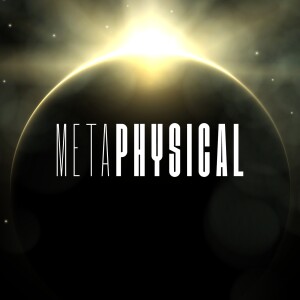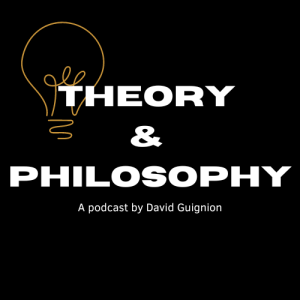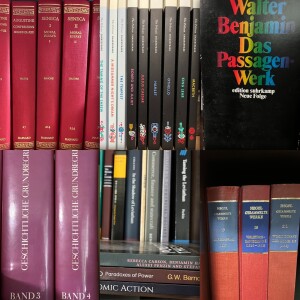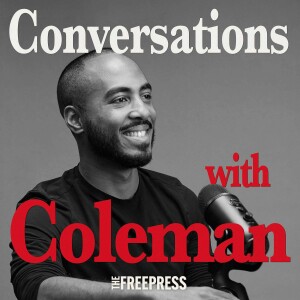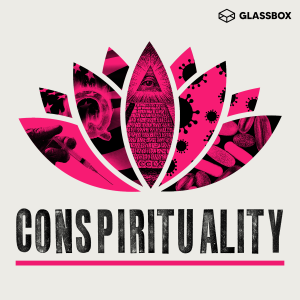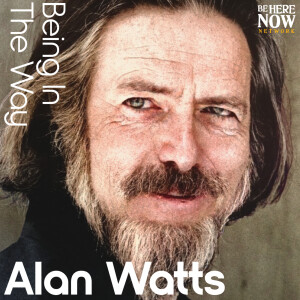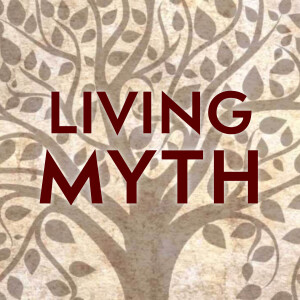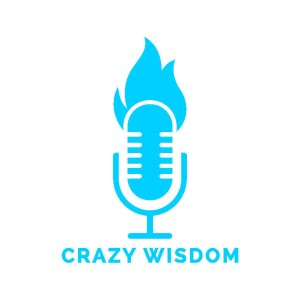

Episode List

Episode #477: Why Curiosity Isn’t Just a Virtue—It’s Our Oldest Technology
In this episode, Stewart Alsop speaks with Edouard Machery, Distinguished Professor at the University of Pittsburgh and Director of the Center for Philosophy of Science, about the deep cultural roots of question-asking and curiosity. From ancient Sumerian tablets to the philosophical legacies of Socrates and Descartes, the conversation spans how different civilizations have valued inquiry, the cross-cultural psychology of AI, and what makes humans unique in our drive to ask “why.” For more, explore Edouard’s work at www.edouardmachery.com.Check out this GPT we trained on the conversationTimestamps00:00 – 05:00 Origins of question-asking, Sumerian writing, norms in early civilizations, authority and written text05:00 – 10:00 Values in AI across cultures, RLHF, tech culture in the Bay Area vs. broader American values10:00 – 15:00 Cross-cultural AI study: Taiwan vs. USA, privacy and collectivism, urban vs. rural mindset divergence15:00 – 20:00 History of curiosity in the West, from vice to virtue post-15th century, link to awe and skepticism20:00 – 25:00 Magic, alchemy, and experimentation in early science, merging maker and scholarly traditions25:00 – 30:00 Rise of public dissections, philosophy as meta-curiosity, Socratic questioning as foundational30:00 – 35:00 Socrates, Plato, Aristotle—transmission of philosophical curiosity, human uniqueness in questioning35:00 – 40:00 Language, assertion, imagination, play in animals vs. humans, symbolic worlds40:00 – 45:00 Early moderns: Montaigne, Descartes, rejection of Aristotle, rise of foundational science45:00 – 50:00 Confucianism and curiosity, tradition and authority, contrast with India and Buddhist thought50:00 – 55:00 Epistemic virtues project, training curiosity, philosophical education across cultures, spiritual curiosityKey InsightsCuriosity hasn’t always been a virtue. In Western history, especially through Christian thought until the 15th century, curiosity was viewed as a vice—something dangerous and prideful—until global exploration and scientific inquiry reframed it as essential to human understanding.Question-asking is culturally embedded. Different societies place varying emphasis on questioning. While Confucian cultures promote curiosity within hierarchical structures, Christian traditions historically linked it with sin—except when directed toward divine matters.Urbanization affects curiosity more than nationality. Machery found that whether someone lives in a city or countryside often shapes their mindset more than their cultural background. Cosmopolitan environments expose individuals to diverse values, prompting greater openness and inquiry.AI ethics reveals cultural alignment. In studying attitudes toward AI in the U.S. and Taiwan, expected contrasts in privacy and collectivism were smaller than anticipated. The urban, global culture in both countries seems to produce surprisingly similar ethical concerns.The scientific method emerged from curiosity. The fusion of the maker tradition (doing) and the scholarly tradition (knowing) in the 13th–14th centuries helped birth experimentation, public dissection, and eventually modern science—all grounded in a spirit of curiosity.Philosophy begins with meta-curiosity. From Socratic questioning to Plato’s dialogues and Aristotle’s treatises, philosophy has always been about asking questions about questions—making “meta-curiosity” the core of the discipline.Only humans ask why. Machery notes that while animals can make requests, they don’t seem to ask questions. Humans alone communicate assertions and engage in symbolic, imaginative, question-driven thought, setting us apart cognitively and culturally.
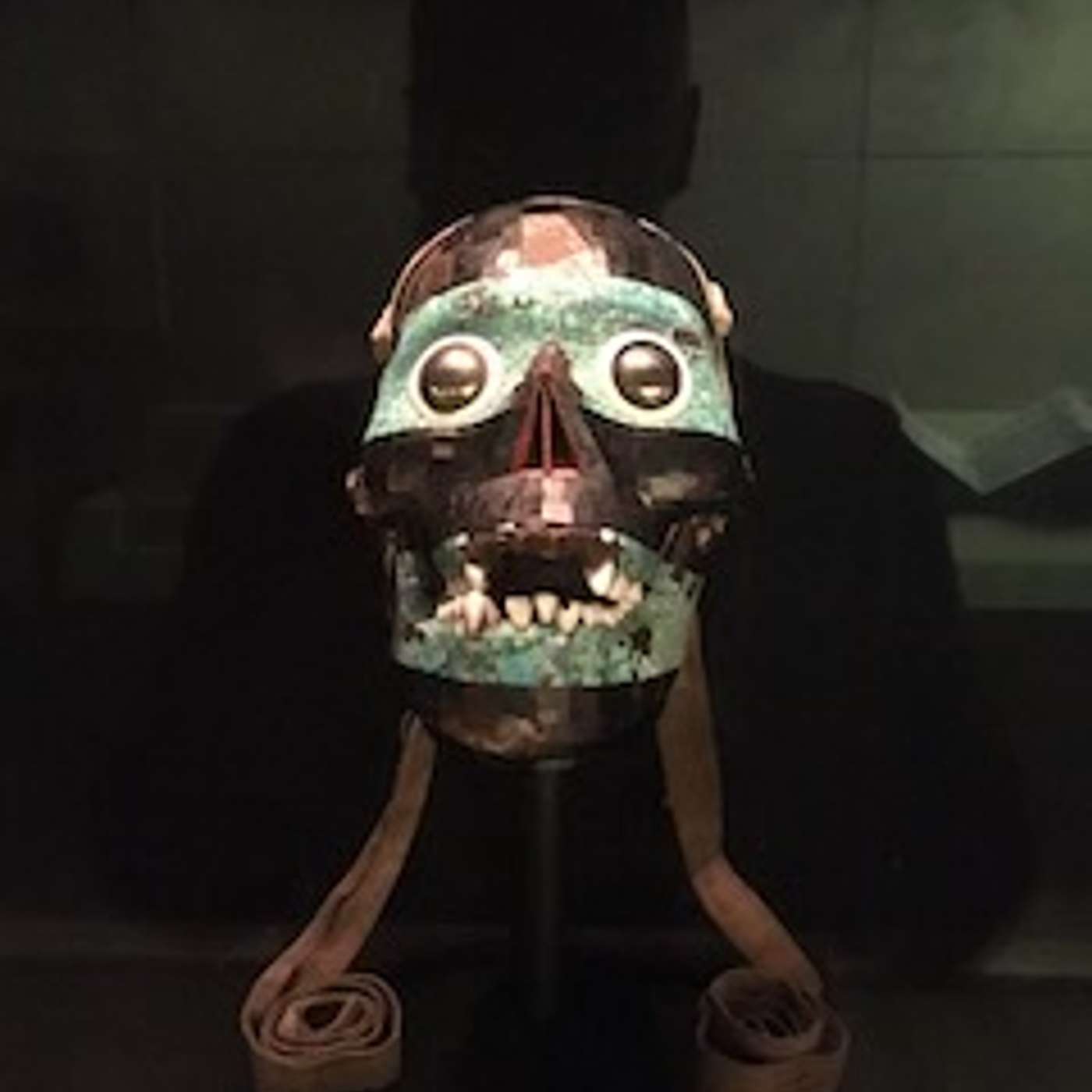
Episode #476: More Than Magic: Astrology as the Oldest Data Science
In this episode of Crazy Wisdom, host Stewart Alsop sits down with astrologer and researcher C.T. Lucero for a wide-ranging conversation that weaves through ancient astrology, the evolution of calendars, the intersection of science and mysticism, and the influence of digital tools like AI on symbolic interpretation. They explore the historical lineage from Hellenistic Greece to the Persian golden age, discuss the implications of the 2020 Saturn-Jupiter conjunction, touch on astrocartography, and reflect on the information age's shifting paradigms. For more on the guest's work, check out ctlucero.com.Check out this GPT we trained on the conversationTimestamps00:00 Stewart Alsop introduces C.T. Lucero; they begin discussing time cycles and the metaphor of Monday as an unfolding future.05:00 Astrology’s historical roots in Hellenistic Greece and Persian Baghdad; the transmission and recovery of ancient texts.10:00 The role of astrology in medicine and timing; predictive precision and interpreting symbolic calendars.15:00 Scientism vs. astrological knowledge; the objective reliability of planetary movement compared to shifting cultural narratives.20:00 Use of AI and large language models in astrology; the limits and future potential of automation in interpretation.25:00 Western vs. Vedic astrology; the sidereal vs. tropical zodiac debate and cultural preservation of techniques.30:00 Christianity, astrology, and the problem of idolatry; Jesus' position in relation to celestial knowledge.35:00 The Saturn-Jupiter conjunction of 2020; vaccine rollout and election disputes as symbolic markers.40:00 The Mayan Venus calendar and its eight-year cycle; 2020 as the true “end of the world.”45:00 Media manipulation, air-age metaphors, and digital vs. analog paradigms; the rise of new empires.50:00 Astrocartography and relocation charts; using place to understand personal missions.Key InsightsAstrology as a Temporal Framework: C.T. Lucero presents astrology not as mysticism but as a sophisticated calendar system rooted in observable planetary cycles. He compares astrological timekeeping to how we intuitively understand days of the week—Sunday indicating rest, Monday bringing activity—arguing that longer astrological cycles function similarly on broader scales.Historical Continuity and Translation: The episode traces astrology’s lineage from Hellenistic Greece through Persian Baghdad and into modernity. Lucero highlights the massive translation efforts over the past 30 years, particularly by figures like Benjamin Dykes, which have recovered lost knowledge and corrected centuries of transcription errors, contributing to what he calls astrology’s third golden age.Cultural and Linguistic Barriers to Knowledge: Lucero and Alsop discuss how language borders—historically with Latin and Greek, and now digitally with regional languages—have obscured access to valuable knowledge. This extends to old medical practices and astrology, which were often dismissed simply because their documentation wasn’t widely accessible.Astrology vs. Scientism: Lucero critiques scientism for reducing prediction to material mechanisms while ignoring symbolic and cyclical insights that astrology offers. He stresses astrology’s predictive power lies in pattern recognition and contextual interpretation, not in deterministic forecasts.Astrology and the Digital Age: AI and LLMs are starting to assist astrologers by generating interpretations and extracting planetary data, though Lucero points out that deep symbolic synthesis still exceeds AI's grasp. Specialized astrology AIs are emerging, built by domain experts for richer, more accurate analysis.Reevaluating Vedic and Mayan Systems: Lucero asserts that Western and Vedic astrology share a common origin, and even the Mayan Venus calendar may reflect the same underlying system. While the Indian tradition preserved techniques lost in the West, both traditions illuminate astrology’s adaptive yet consistent core.2020 as a Historical Turning Point: According to Lucero, the Saturn-Jupiter conjunction of December 2020 marked the start of a 20-year societal cycle and the end of a Mayan Venus calendar “day.” He links this to transformative events like the vaccine rollout and U.S. election, framing them as catalysts for long-term shifts in trust, governance, and culture.
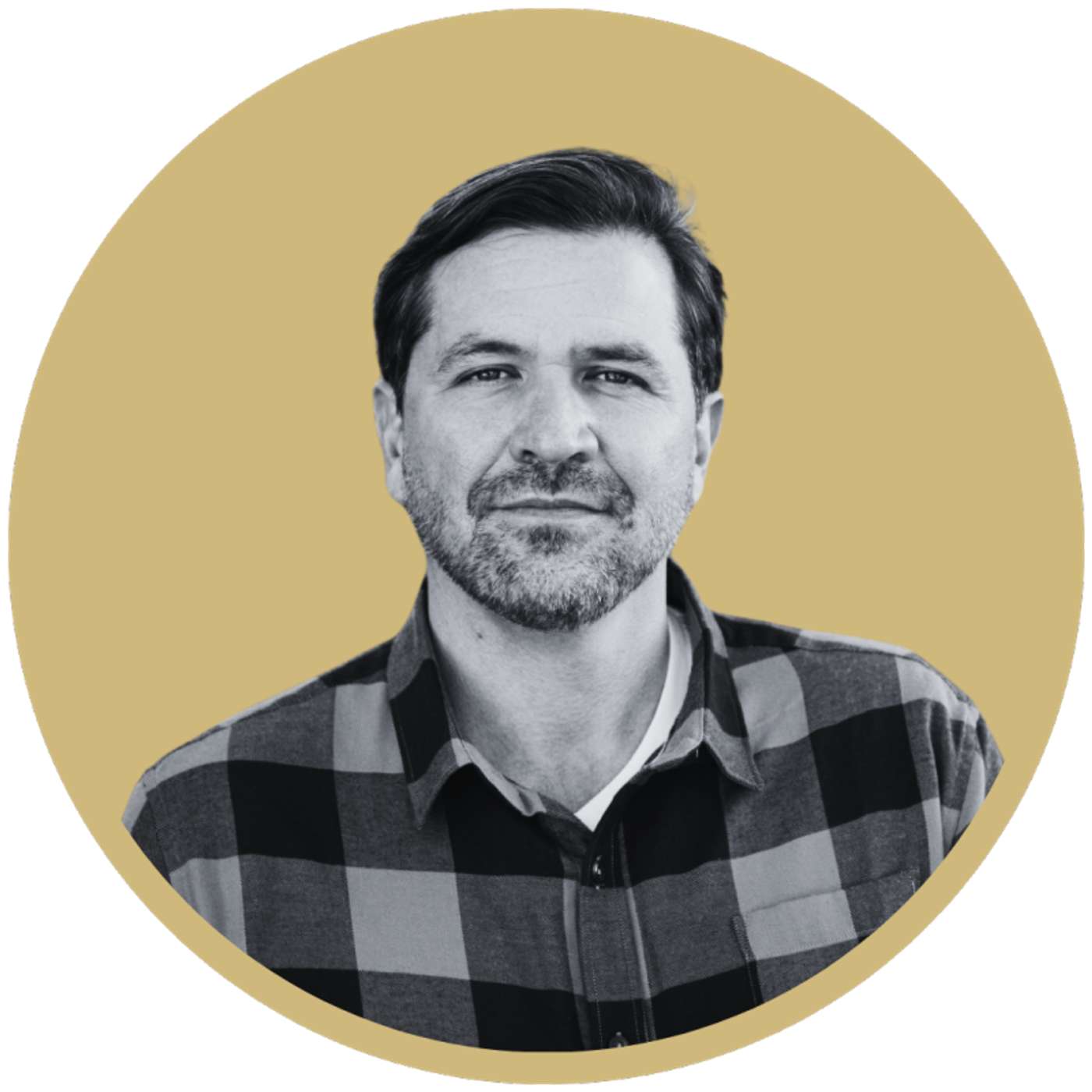
Episode #475: The Illusion We Opt Into: VR, AI, and the Fractals of Reality
In this episode of Crazy Wisdom, host Stewart Alsop speaks with Ryan Estes about the intersections of podcasting, AI, ancient philosophy, and the shifting boundaries of consciousness and technology. Their conversation spans topics like the evolution of language, the impact of AI on human experience, the role of sensory interfaces, the tension between scientism and spiritual insight, and how future technologies might reshape power structures and daily life. Ryan also shares thoughts on data ownership, the illusion of modern VR, and the historical suppression of mystical knowledge. Listeners can connect with Ryan on LinkedIn and check out his podcast at AIforFounders.co.Check out this GPT we trained on the conversationTimestamps00:00 – Stewart Alsop and Ryan Estes open with thoughts on podcasting, conversation as primal instinct, and the richness of voice communication.05:00 – Language and consciousness, bicameral mind theory, early religion, and auditory hallucinations.10:00 – AI, cognitive ergonomics, interfacing with tech, new modes of communication, and speculative consciousness.15:00 – Scientism, projections, and authenticity; ownership of hardware, software, and data.20:00 – Tech oligarchs, Apple, Google, OpenAI, and privacy trade-offs.25:00 – VR, escapism, illusion vs. reality, Buddhist and Gnostic parallels.30:00 – Magic, Neoplatonism, Copernicus, alchemy, and suppressed knowledge.35:00 – Oligarchy, the fragile middle class, democracy’s design, and authority temptation.40:00 – AGI, economic shifts, creative labor, vibe coding, and optimism about future work.45:00 – Podcasting's future, amateur charm, content creation tools, TikTok promotion.Key InsightsConversation is a foundational human instinct that transcends digital noise and brings people together in a meaningful way. Ryan Estes reflects on how podcasting revives the richness of dialogue, countering the flattening effects of modern communication platforms.The evolution of language might have sparked consciousness itself. Drawing on theories like the bicameral mind, Estes explores how early humans may have experienced internal commands as divine voices, illustrating a deep link between communication, cognition, and early religious structures.AI is not just a tool but a bridge to new kinds of consciousness. With developments in cognitive ergonomics and responsive interfaces, Estes imagines a future where subconscious cues might influence technology directly, reshaping how we interact with our environment and each other.Ownership of software, hardware, and data is emerging as a critical issue. Estes emphasizes that to avoid dystopian outcomes—such as corporate control via neural interfaces—individuals must reclaim the stack, potentially profiting from their own data and customizing their tech experiences.Virtual reality and AI-generated environments risk becoming addictive escapes, particularly for marginalized populations. Estes likens this to a digital opiate, drawing parallels to spiritual ideas about illusion and cautioning against losing ourselves in these seductive constructs.The suppression of mystical traditions—like Gnosticism, Neoplatonism, and indigenous knowledge—has led to vast cultural amnesia. Estes underscores how historical power structures systematically erased insights that modern AI might help rediscover or recontextualize.Despite the turbulence, AI and AGI offer a radically optimistic future. Estes sees the potential for a 10x productivity boost and entirely new forms of work, creativity, and leisure, reshaping what it means to be economically and spiritually fulfilled in a post-knowledge age.

Episode #474: Truth Beams and Chaotic Solutions: Building Decentralized Futures
In this episode of Crazy Wisdom, Stewart Alsop sits down with the masked collective known as the PoliePals—led by previous guest Cathal—to explore their audacious vision of blending humans, nature, and machines through cryptographic reality verification and decentralized systems. They talk about neural and cryptographic projector-camera technologies like the “truth beam” and “reality transform,” analog AI using optical computing, and how open protocols and decentralized consensus could shift power away from corporate control. Along the way, they share stories from Moad’s chaotic tinkering workshop, Meta’s precise Rust-coded Alchemy project, and Terminus Actual’s drone Overwatch. For links to their projects, visit Poliebotics on Twitter and Poliebotics on GitHub.Check out this GPT we trained on the conversationTimestamps00:05 Neural and cryptographic projector-camera systems, reality transform for art and secure recordings, provably unclonable functions.00:10 Moad’s GNOMAD identity, chaotic holistic problem-solving, tinkering with tools, truth beam’s manifold mapping.00:15 Terminus Actual’s drone Overwatch, security focus, six hats theory, Lorewalker’s cryptic mathematical integrations.00:20 Analog AI and optical computing, stacked computational layers, local inference, physical reality interacting with AI.00:25 Meta’s Alchemy software, music-driven robotics, precise Rust programming, contrast with neural network unpredictability.00:30 Decentralization, corporate dependency critique, hardware ownership, open protocols like Matrix, web of trust, Sybil attacks.00:35 Truth beam feedback loops, decentralized epistemology, neo-feudalism, Diamond Age references, nano drone warfare theory.00:40 Biotech risks, lab truth beams for verification, decentralized ID systems, qualitative consensus manifolds.00:45 Maker culture insights, 3D printing community, iterative prototyping, simulators, recycling prints.00:50 Investment casting, alternative energy for classic cars, chaotic hardware solutions, MoAD workshop’s mystical array.00:55 Upcoming PolyPals content, Big Yellow Island recordings, playful sign-offs, decentralized futures.Key InsightsThe PoliePals are pioneering a system that combines cryptographic models, neural projector-camera technologies, and decentralized networks to create tools like the “truth beam” and “reality transform,” which verify physical reality as a provably unclonable function. This innovation aims to secure recordings and provide a foundation for trustworthy AI training data by looping projections of blockchain-derived noise into reality and back.Moad’s character, the GNOMAD—a hybrid of gnome and nomad—embodies a philosophy of chaotic problem-solving using holistic, artful solutions. His obsession with edge cases and tinkering leads to surprising fixes, like using a tin of beans to repair a broken chair leg, and illustrates how resourcefulness intersects with decentralization in practical ways.Terminus Actual provides a counterbalance in the group dynamic, bringing drone surveillance expertise and a healthy skepticism about humanity’s inherent decency. His perspective highlights the need for security consciousness and cautious optimism when developing open systems that could otherwise be exploited.Meta’s Alchemy project demonstrates the contrast between procedural precision and chaotic neural approaches. Written entirely in Rust, it enables music-driven robotic control for real-world theater environments. Alchemy represents a future where tightly optimized code can interact seamlessly with hardware like Arduinos while remaining resistant to AI’s unpredictable tendencies.The episode explores how decentralization could shape the coming decades, likening it to a neo-feudal age where people consciously opt into societies based on shared values. With open protocols like Matrix, decentralized IDs, and webs of trust, individuals could regain agency over their data and technological ecosystems while avoiding corporate lock-in.Optical computing experiments reveal the potential for analog AI, where stacked shallow computational layers in physical media allow AI to “experience” sensory input more like a human. Though still speculative, this approach could produce richer, lower-latency responses compared to purely digital models.Maker culture and hardware innovation anchor the conversation in tangible reality. Moad’s MoAD workshop, filled with tools from industrial sewing machines to 3D printers and lathes, underscores how accessible technologies are enabling chaotic creativity and recycling systems. This grassroots hardware tinkering aligns with the PoliePals’ broader vision of decentralized, cooperative technological futures.

Episode #473: Breaking the Parasite Spell: Metabolic Healing and Remembering Who We Are
On this episode of Crazy Wisdom, Stewart Alsop talks with Larry Diamond, co-founder of Healing with the Diamonds, about his journey from severe metabolic illness to vibrant health and his work helping others do the same. They explore topics like heart-brain coherence, the alchemical journey, insulin resistance, seed oils, and the deeper spiritual dimensions of healing, weaving in references to David Hawkins, Rupert Sheldrake, and the lost wisdom of the divine feminine. Larry shares insights on metabolic testing, ancestral eating, and the importance of authentic living, while also touching on the role of parasites—his term for the forces keeping humanity in fear and incoherence. You can find more about Larry and his work, as well as access his consulting, at healingwiththediamonds.com, and on Instagram and Facebook at Healing with the Diamonds. You can also read his latest blog "The Epidemic of Under-Nutrition in the Modern World and Why It Matters" in Substack or listen to his upcoming podcast in Apple podcasts or Spotify.Check out this GPT we trained on the conversationTimestamps00:00 Stewart Alsop introduces Larry Diamond of Healing with the Diamonds; they discuss his healing journey, health coaching, and the meaning of heart-brain coherence.05:00 Alchemical journey, crystals, the hero’s journey, integrating masculine and feminine energies, and the idea of parasites feeding on fear.10:00 Kindness vs niceness, morphic fields, Rupert Sheldrake’s theories, and quantum entanglement as evidence of interconnectedness.15:00 Scientism vs true science, metabolic illness, citizen science, Larry’s 2013 health transformation.20:00 Metabolic syndrome, C-reactive protein, fasting insulin, insulin resistance, and Larry’s weight loss story.25:00 Seed oils, refined carbs, ultra-processed foods, and strategies for restoring metabolic health.30:00 Carb cycling, primal eating, intuitive healing, and ancestral wisdom.35:00 Spirituality beyond religion, Yeshua vs Jesus, divine feminine, and writing your own gospel.40:00 Living authentically, kindness in daily life, and finding healing in sovereignty and connection.Key InsightsLarry Diamond shares how his journey from severe metabolic illness to vibrant health became the foundation for Healing with the Diamonds. He explains how hitting rock bottom in 2013 inspired him to reject mainstream dietary advice and embrace a primal, whole foods approach that reversed his insulin resistance and helped him lose over 100 pounds.A major theme of the conversation is heart-brain coherence, which Larry describes as essential for true wisdom and discernment. He connects this to ancient teachings, referencing Yeshua’s “sword of discernment” and suggesting that Western culture intentionally suppressed this knowledge to keep people in fear and mental fragmentation.The episode explores the alchemical journey as a metaphor for inner transformation, likening it to Joseph Campbell’s hero’s journey. Larry emphasizes integrating masculine and feminine energies and overcoming ego as key steps in remembering our divine nature and embodying authenticity.Larry critiques scientism, which he calls the inversion of true science, and encourages listeners to reclaim citizen science as a path to health sovereignty. He shares practical tools like testing for C-reactive protein, A1C, fasting insulin, and using triglycerides-to-HDL ratios to assess metabolic health.He identifies the “Big Four” dietary culprits—seed oils, refined carbs, ultra-processed foods, and sugar—as drivers of chronic illness and advocates returning to ancestral foods rich in natural fats and nutrients. He stresses that flavor and enjoyment are critical for sustainable healing.On the spiritual side, Larry reframes the Abrahamic religions as distortions of deeper wisdom traditions, contrasting the figure of Yeshua (aligned with love and sovereignty) with the institutionalized Jesus narrative. He highlights the divine feminine, Sophia, as a source of intuition and co-creation with the cosmos.Finally, Larry encourages listeners to “write your own gospel and live your own myth,” seeing authentic, kind, and sovereign living as both a spiritual and practical act of resistance to what he calls the parasite class—forces of fear and manipulation seeking to block human awakening.
Create Your Podcast In Minutes
- Full-featured podcast site
- Unlimited storage and bandwidth
- Comprehensive podcast stats
- Distribute to Apple Podcasts, Spotify, and more
- Make money with your podcast
